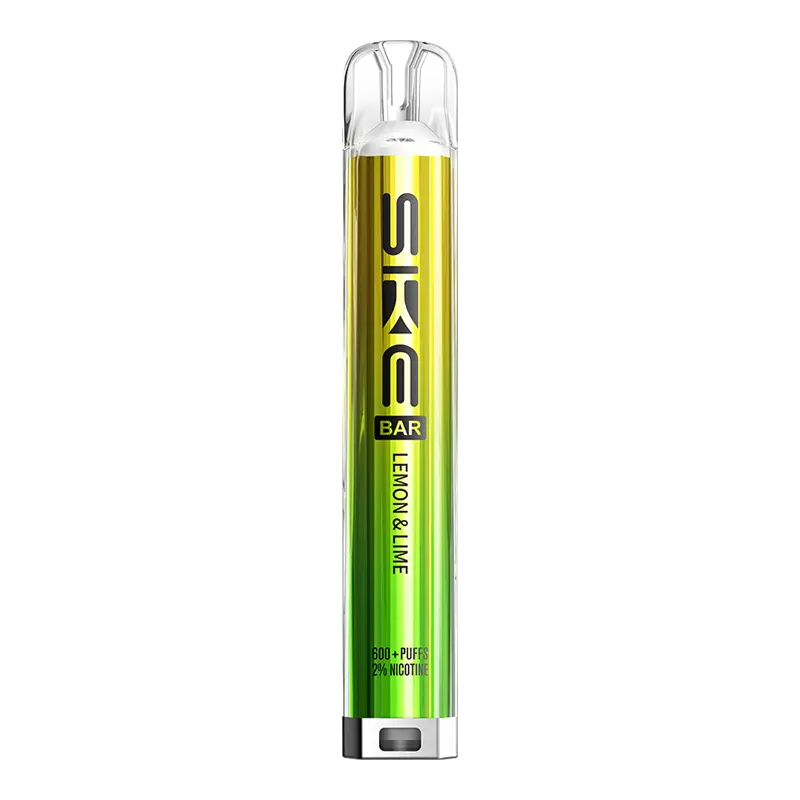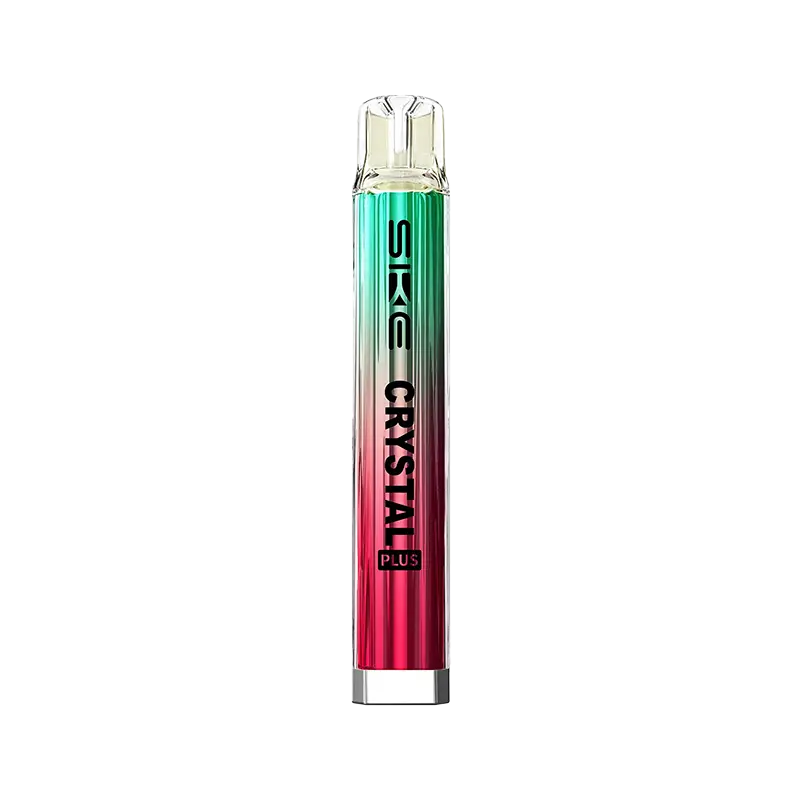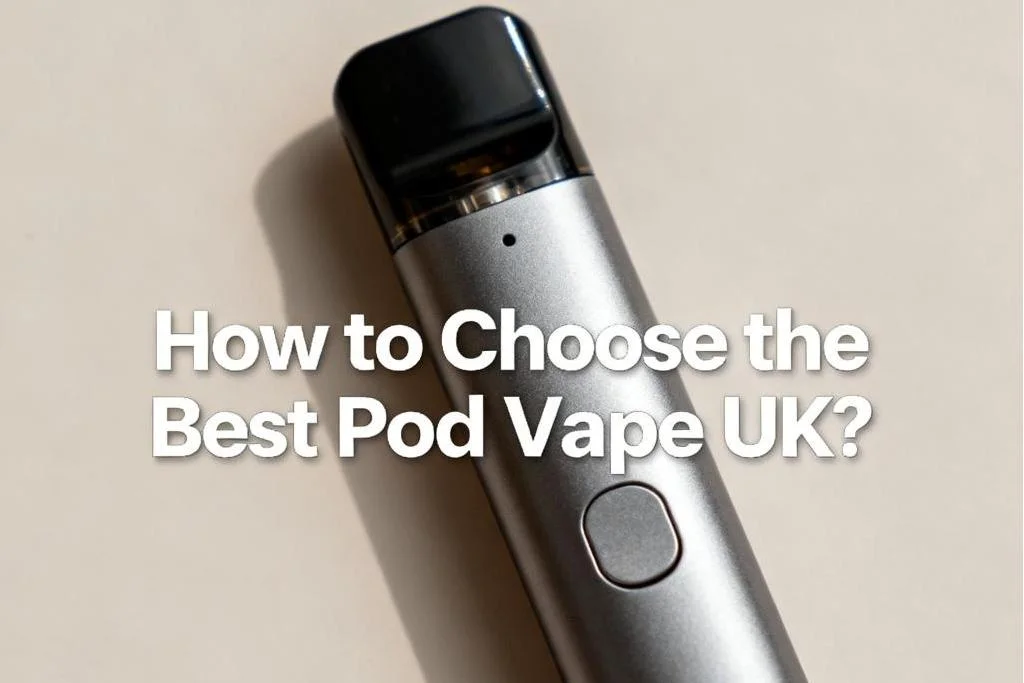How Do Vape Cartridges Work? Master the Mechanics Today
Picture this: you’re holding a sleek, compact device in your hand, and with a single puff, you’re greeted by a burst of flavor and a cloud of vapor. It’s almost like magic — but how do vape cartridges work to turn e-liquid into luscious vapor? These little powerhouses are a marvel of modern vaping technology, blending science and style to deliver a seamless, satisfying experience. Let’s crack open the mystery and discover what makes these cartridges tick, from the first inhale to the last puff.

What Do Vape Cartridges Look Like?
Vape cartridges are small, cylindrical containers typically made of glass, plastic, or metal. They’re usually about an inch or two long and crafted to hold e-liquid or cannabis oil.
Most cartridges are transparent or semi-transparent, allowing you to see the e-liquid inside. They come with a mouthpiece at the top, the part you inhale from, and a base that connects to a vape pen or battery. Inside, you'll find a heating element, like a coil or wick responsible for turning the liquid into vapor.
While their appearance can vary slightly depending on the brand and model, most vape cartridges are sleek, compact, and easy to carry, with a straightforward and user-friendly design.
How Do Vape Cartridges Work?
Comprehending how vape cartridges work involves breaking down their operation into several key steps and components.
1. Activation of the Device:
By pressing the button on your vape pen or simply inhaling a draw-activated e-cig, an electrical circuit completes and triggers the battery to send an electric current directly to the heating element inside the cartridge. Here, the battery type and power output (measured in volts or watts) are crucial, as they determine the heat generated and, consequently, the vapor quality produced.
2. Heating the Element:
The heating element inside the cartridge, typically a metal coil made from materials like stainless steel, kanthal, or nickel, quickly heats up and serves as the heart of the vaporization process, with its material and design affecting how quickly and evenly it heats. The coil's temperature is usually set to an optimal range (between 300°F and 450°F or around 150°C to 230°C) to ensure the liquid is vaporized effectively without burning.
3. Wicking Process:
Inside the cartridge, a wick, usually made from materials like cotton, silica, or ceramic, absorbs the e-liquid or cannabis oil from the reservoir, to keep the liquid in constant contact with the heating coil. The wicking material is key to the flavor and smoothness of the vapor: for example, ceramic wicks offer a more even heating surface and enhance flavor. In contrast, cotton wicks provide quicker saturation and are more common in many cartridges.
4. Vaporization:
As the heating element reaches its target temperature, it vaporizes the e-liquid or oil soaked into the wick, turning the liquid into a fine mist or inhalable vapor. The essential here is the precise control of temperature: if the coil is too hot, it can burn the wick or liquid, leading to a harsh or burnt taste. On the contrary, if it's too cool, the liquid won't vaporize properly, resulting in weak or unsatisfying hits.
5. Airflow Management:
When you take a puff, the air is drawn into the cartridge through small intake holes and mixed with the vaporized liquid, flowing through a central chimney or tube before reaching the mouthpiece where you inhale it. With adjustable airflow controls on many vape cartridges, you can customize the resistance of each draw to either create a tighter pull that feels like smoking a cigarette or opt for a looser pull that generates bigger vapor clouds and delivers a smoother hit.
6. Flavor and Vapor Production:
The design of the cartridge, including the airflow path and the type of coil used, significantly affects the flavor and amount of vapor produced.
- Ceramic coils tend to provide a more even and controlled heating surface, reducing the risk of burning and improving the flavor.
- Quartz coils heat up more quickly, offering a stronger hit, which might be preferred by those who enjoy a more intense vaping experience.
- Mesh coils offer an expansive surface area and deliver a rapid, even heat distribution that unlocks richer flavors and denser clouds.
7. Compatibility with Devices:
Most vape cartridges are built with a 510-thread connection, which is the industry standard, allowing them to be used with broad vape pens and 510-thread batteries. However, some cartridges target proprietary, meaning they will only work with specific vaping devices from the same manufacturer. It will affect the cartridge's performance, as certain batteries provide the precise voltage or wattage needed for optimal vapor production and flavor.
8. Advanced Features:
Many modern vape cartridges come with additional features, such as temperature control settings that allow you to set the exact temperature for your vaping session, or preheat functions that warm the liquid before taking a draw. These are especially valuable for thicker oils or concentrates, offering a more personalized vaping experience by reducing the chances of clogging or burnt hits and promoting a smoother, more enjoyable vape.
Now it becomes clear how vape carts work to deliver a satisfying vaping experience. Every component, from the heating coil to the airflow system, is crafted to function seamlessly, transforming liquid into a flavorful vapor that aligns with your preferences with each puff.

How to Use a Vape Cartridge?
Using a vape cartridge is straightforward, but following the right steps validates a smooth and enjoyable experience.
A. Choose the Right Battery or Device
Check your vaping device’s specifications before attaching the cartridge, making sure your vape cartridge is compatible with your vape pen or battery. Most cartridges use a 510-thread connection, but some may be proprietary and only work with specific devices.
B. Attach the Cartridge to the Battery
Screw the vape cartridge onto the battery or device securely, but avoid overtightening. A firm but gentle twist is usually enough to secure a proper connection without damaging the threading.
C. Power On the Device
If your device has a power button, press it five times quickly to turn it on. If it's draw-activated, the device will automatically power on as you inhale through the mouthpiece.
D. Prime the Cartridge (if necessary)
Before your first use, take a few gentle puffs without pressing the power button (if applicable) to draw the vape liquid into the wick, ensuring it's saturated and ready to vaporize effectively, preventing dry hits or burning.
E. Adjust the Airflow Settings
Set to your preferred draw resistance: for a tighter, cigarette-like draw, close the airflow slightly, for larger vapor clouds and smoother hits, open the airflow wider.
F. Set the Desired Temperature or Power Level
Start at a lower setting to gauge your comfort level and gradually increase if needed, if some devices allow you to adjust voltage, wattage, or temperature settings, which can help prevent burning the liquid or wick while enhancing the flavor.
G. Inhale Gently
Place your lips around the mouthpiece, press the power button if required, and inhale gently with a slow and steady pull to produce the best results, as drawing too hard or quickly can flood the coil or cause a harsh hit.
Reference: How to Vape without Coughing
H. Monitor Your Usage
Since most cartridges have a transparent or semi-transparent design that allows you to see the liquid level, please regularly check the remaining amount and refill or replace the cartridge when the liquid is low to prevent burning the wick.
I. Turn Off the Device When Not in Use
If your device has a power button, press it five times quickly to turn it off when you’re finished to conserve battery life and prevent accidental activation.
J. Store Properly
Store your vape cartridge in a cool, dry place, away from direct sunlight or extreme temperatures. Also, keep the cartridge upright when not in use to prevent leaks and preserve the quality of the liquid.
Reference: How to Store Disposable Vapes for Optimal Enjoyment

How Long Does a Vape Cartridge Last?
On average, a standard 1-gram vape cartridge typically lasts anywhere from a few days to a couple of weeks for most users. The exact duration can vary widely based on:
Usage Habits
If you’re a light vaper, taking just a few puffs daily, your cartridge could last a week or more. However, if you’re a heavy user who takes frequent, longer draws, you might find yourself needing a new cartridge after just a few days. The size of each puff, or “draw,” also impacts longevity — longer, deeper inhales consume more liquid or oil with each use.
E-liquid Concentration
Cartridges filled with more potent e-liquids or oils may require less frequent usage to achieve the desired effects, thereby extending their lifespan. On the other hand, thinner, less concentrated liquids might necessitate more frequent use to achieve the same level of satisfaction, contributing to a shorter cartridge lifespan.
Reference: How to Determine the Nicotine Level in Your E-Juice
Power Settings
Higher power levels will vaporize the liquid more quickly, reducing the lifespan of your cartridge. Conversely, lower settings can help conserve the e-liquid or oil, making your cartridge last longer.
Cartridge Size
Larger cartridges, such as those that hold 1 gram or more, contain a greater volume of liquid, which means they typically provide more puffs and last longer than smaller cartridges, like those that only hold half a gram or less. Conversely, smaller cartridges may run out more quickly, especially with heavy or frequent use, as they contain less liquid to begin with.
Do Vape Carts Expire?
Yes, vape cartridges do expire. The primary reason vape cartridges expire is due to the degradation of the vape liquid inside. Over time, exposure to light, heat, and air can cause the e-liquid or oil to break down, changing its color, taste, and potency.
Besides, exposure to high heat may cause the vape juice to thin and potentially leak, while cold temperatures might cause it to thicken, making it harder for the wick or coil to absorb and vaporize properly.
In addition, the materials used in the cartridge also affect its expiration. Cartridges made with high-quality materials, such as glass or stainless steel, are less likely to interact with the liquid and cause changes in flavor or potency compared to those made with cheaper plastics, which can degrade over time or leach unwanted chemicals into the liquid.

Do Vape Cartridges Get Clogged?
Yes, vape cartridges can get clogged, and it’s a common issue that many vapers experience.
One primary reason for clogging is thick or highly viscous liquids. E-liquids with a higher concentration of vegetable glycerin (VG) or cannabis oils that are naturally thick can sometimes struggle to flow properly through the cartridge, generating condensation or residue buildup, particularly near the mouthpiece or inside the airflow channels, causing a blockage.
Another factor contributing to clogging is infrequent use. If you leave a vape cartridge unused for an extended period, the vape juice inside can settle or thicken, increasing the chances of clogs, especially true for oils or concentrates, which may solidify or crystallize at room temperature.
Improper storage can also produce clogging. If a cartridge is stored horizontally or upside down, the e-liquid can seep into areas not supposed to be, like the mouthpiece or airflow holes, which can cause blockage.
Additionally, temperature fluctuations can influence clogging. Cold temperatures can cause the liquid inside the cartridge to thicken, while warm temperatures can cause it to become too thin, triggering leaks that can eventually dry and clog the airflow.
Luckily, if your vape cartridge gets clogged, there are simple ways to fix it. You can try gently blowing through the mouthpiece to clear any blockages, using a thin, needle-like tool to carefully remove any visible debris, storing cartridges upright, or heating it slightly by drawing a few quick puffs without fully activating the heating element.

So, how do vape cartridges work? It’s all about a delicate balance between heat, airflow, and the liquid within — turning science into satisfaction with every puff. Whether you're curious about the lifespan of your cartridge, worried about related clogs, or wondering if they expire, understanding their inner workings can help you get the most out of your experience.
FAQs
Q1: Are Vape Cartridges Reusable?
Most pre-filled vape cartridges are not reusable because they're designed for single-use convenience. After the oil is depleted, the internal coil and wick often become less efficient with reduced vapor quality and flavor. Reusing disposable cartridges is not recommended, as they aren't built for durability and may result in leaks, uneven heating, or even clogging.
However, there are refillable cartridges available that let users add their own oils or concentrates repeatedly. While this can be cost-effective, it's important to note that refillable cartridges also have a limited lifespan, as the heating element and wick degrade over time due to repeated use.
Q2: Should You Refrigerate Vape Cartridges?
It's generally unnecessary to refrigerate vape cartridges, as they remain stable at room temperature, but if you live in a particularly hot climate, storing them in a cool, dry place can help preserve the oil's consistency and prevent leaks or degradation from excessive heat exposure.
Q3: Is It Bad if My Cart Is Dark?
A darkened vape cartridge isn't always a sign of something bad. Over time, exposure to light, heat, and oxygen can cause the oil to oxidize, leading to a darker color. It's a natural process that doesn't always mean the oil is unsafe or unusable. However, if the oil appears cloudy, contains visible particles, or smells burnt or off, it's likely degraded and should not be used.
Q4: Do Vape Cartridges Lose Potency?
Yes, vape cartridges can lose potency over time, primarily due to exposure to heat, light, and oxygen. Cannabinoids such as THC and CBD are sensitive to these environmental factors, and their chemical structure can degrade, reducing their effectiveness. Similarly, terpenes, which contribute to the oil's flavor and aroma, can evaporate or break down, diminishing the overall experience.
On average, a well-stored cartridge retains its strength for 6 to 12 months, though the exact timeframe may vary based on the quality of the oil and the storage conditions.
Q5: Why Do You Preheat a Vape Cartridge?
Preheating a vape cartridge is an essential step for achieving a consistent and smooth vaping experience, especially if you're using thicker oils or live in a colder environment.
Preheating warms the oil slightly, allowing it to flow more easily into the wick or ceramic core, which ensures even absorption and vaporization. It also prevents dry hits, which occur when the heating element doesn't have enough oil to vaporize. Some batteries have a preheat function that automatically warms the cartridge for a few seconds before use.
Q6: Can You Use a Vape Cartridge Without a Pen?
Using a vape cartridge without a pen or battery is technically possible but highly discouraged.
Some individuals attempt to manually heat the cartridge's coil by applying direct heat (such as using a lighter), but it's unsafe and can cause the cartridge to overheat, leading to leaks, burnt oil, or even glass breakage. Without a pen, you also lack control over the temperature, which could result in uneven vaporization or harmful byproducts.
Q7: Do Vape Cartridges Stop Working?
Yes, vape cartridges can stop working due to several reasons. Common issues include a clogged airway (often caused by thickened oil or residue buildup), a burnt or worn-out coil, or a depleted battery. In some cases, the connection between the cartridge and the battery may be loose or dirty, preventing the electrical current from flowing.
TABLE OF CONTENTS
- What Do Vape Cartridges Look Like?
- How Do Vape Cartridges Work?
- 1. Activation of the Device:
- 2. Heating the Element:
- 3. Wicking Process:
- 4. Vaporization:
- 5. Airflow Management:
- 6. Flavor and Vapor Production:
- 7. Compatibility with Devices:
- 8. Advanced Features:
- How to Use a Vape Cartridge?
- A. Choose the Right Battery or Device
- B. Attach the Cartridge to the Battery
- C. Power On the Device
- D. Prime the Cartridge (if necessary)
- E. Adjust the Airflow Settings
- F. Set the Desired Temperature or Power Level
- G. Inhale Gently
- H. Monitor Your Usage
- I. Turn Off the Device When Not in Use
- J. Store Properly
- How Long Does a Vape Cartridge Last?
- Usage Habits
- E-liquid Concentration
- Power Settings
- Cartridge Size
- Do Vape Carts Expire?
- Do Vape Cartridges Get Clogged?
- FAQs























